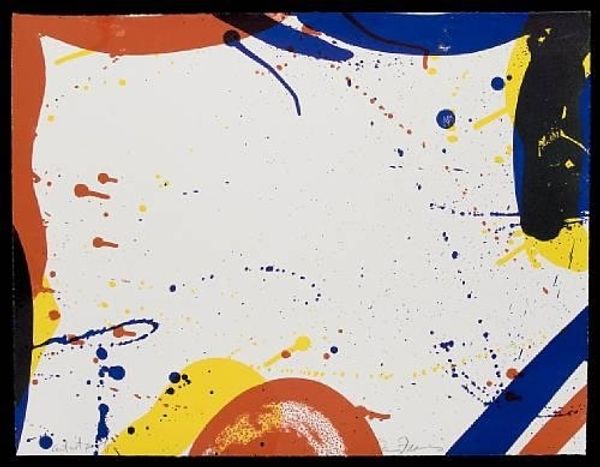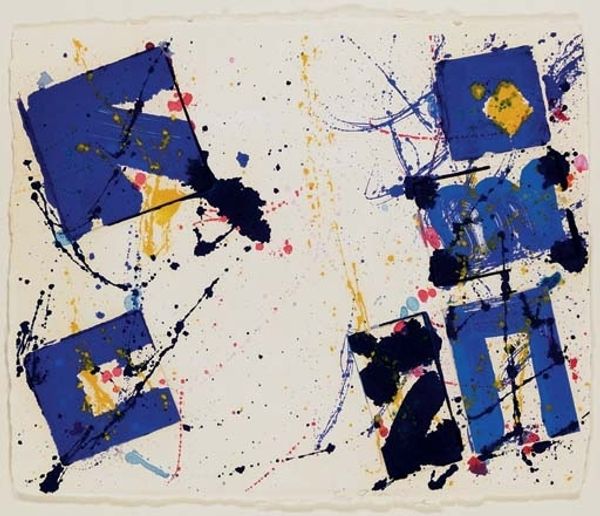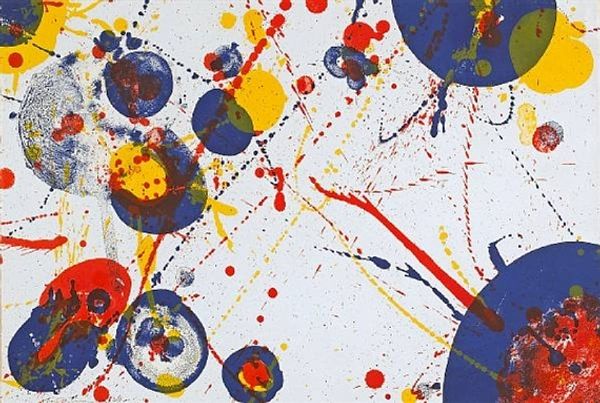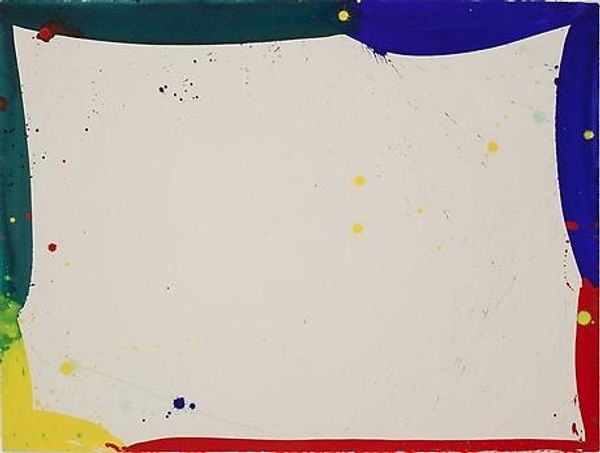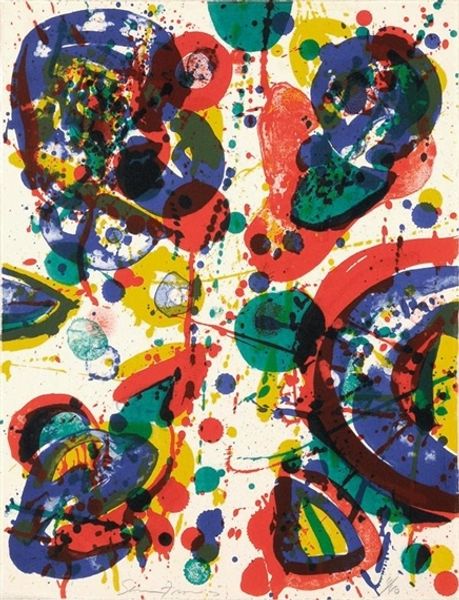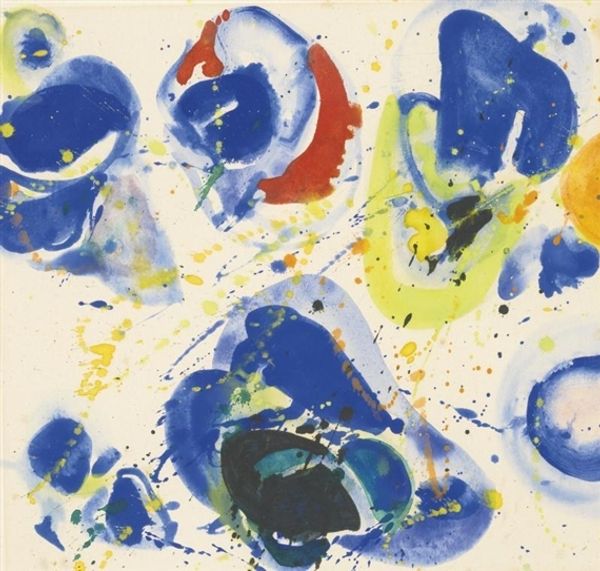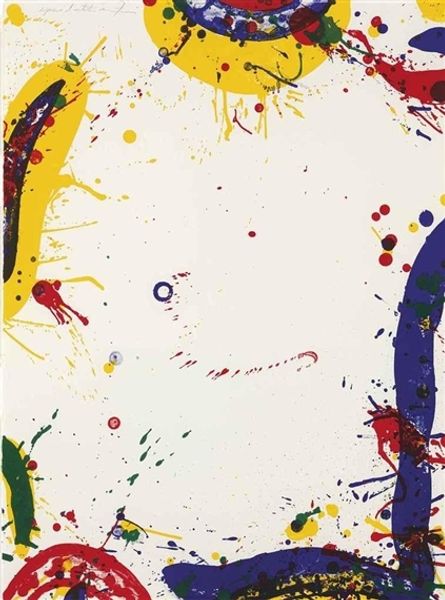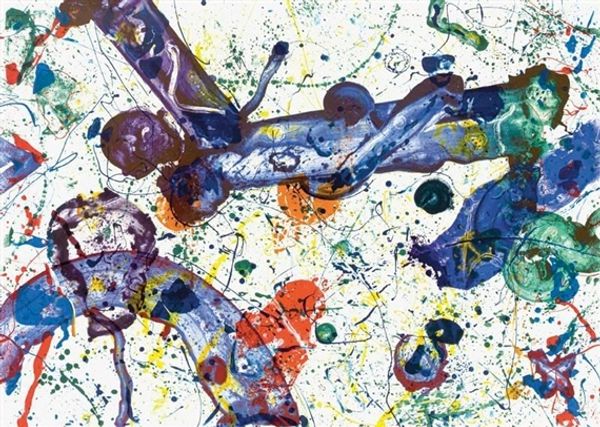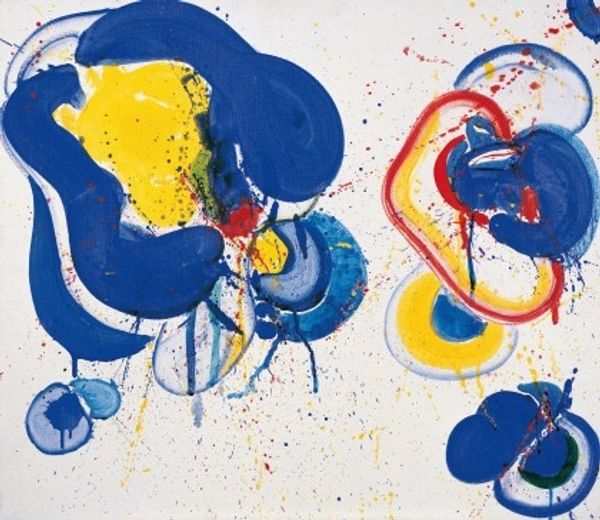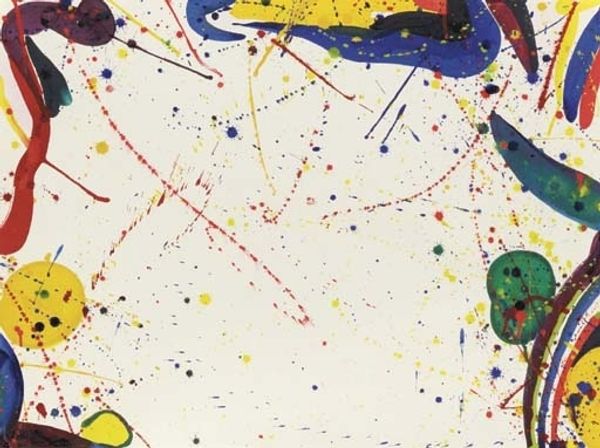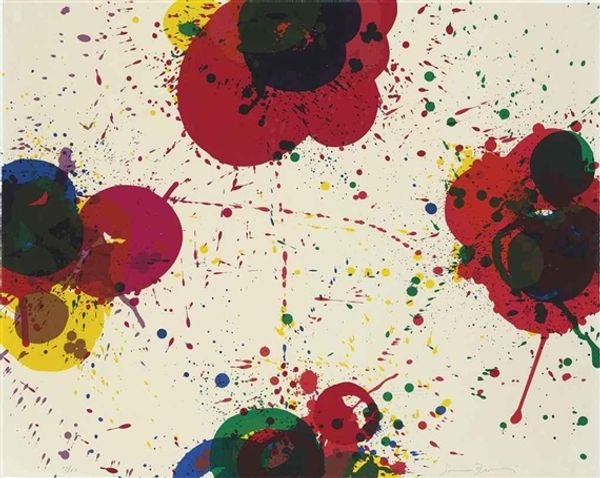
acrylic-paint
#
abstract-expressionism
#
abstract expressionism
#
abstract painting
#
colour-field-painting
#
acrylic-paint
#
abstraction
#
line
Dimensions: sheet: 15.56 × 30.8 cm (6 1/8 × 12 1/8 in.)
Copyright: National Gallery of Art: CC0 1.0
Curator: Sam Francis’s "Red, White and Blue" from 1967, realized with acrylic paint, presents quite an engaging chromatic experience. What’s your initial response? Editor: It's exhilarating! The expanses of white set off by these bold primary hues give off an improvisational energy. Almost like the colours are fighting for space but find a sense of equilibrium together. Curator: Absolutely. And that use of acrylic – think about the context. This was a shift from traditional oil painting, a move toward new materials that matched a rapidly changing society, cheaper synthetic colors became easily accessible. This isn’t just about aesthetics; it’s about material innovation reshaping artistic practice, expanding it. Editor: Right. I see the tension with formalism that would have framed that period. Looking closer, the white isn't simply negative space. It is an active presence, acting as an ideological canvas where different, possibly dissonant, perspectives meet in a cultural moment ripe with upheaval. The splashes of black feel… discordant? Curator: The scale here might offer insight. Francis was producing canvases, large and small, rapidly. A studio practice emphasizing volume. The splatter technique would certainly expedite the painting. It becomes, I think, more about accessibility through the speed of manufacture, almost Warholian if we consider how popular art can spread. Editor: Agreed. I can also see it in terms of Cold War cultural politics. American abstract expressionism was often wielded as a symbol of freedom. It also evokes a moment of cultural turmoil; it would be disingenuous to view its color palette outside the charged atmosphere of American culture at this time. Curator: The drips and splatters definitely signal something beyond a clean, heroic vision of progress, especially as art and design began influencing product development on a large scale. Editor: Ultimately, Francis seems to encapsulate an era—a mix of optimism with undertones of disquiet – through his unconventional use of materials and explosive approach to the canvas. Curator: I'd add, through those industrial materials and that almost mass production output. Editor: A great perspective to keep in mind. Thanks.
Comments
No comments
Be the first to comment and join the conversation on the ultimate creative platform.
